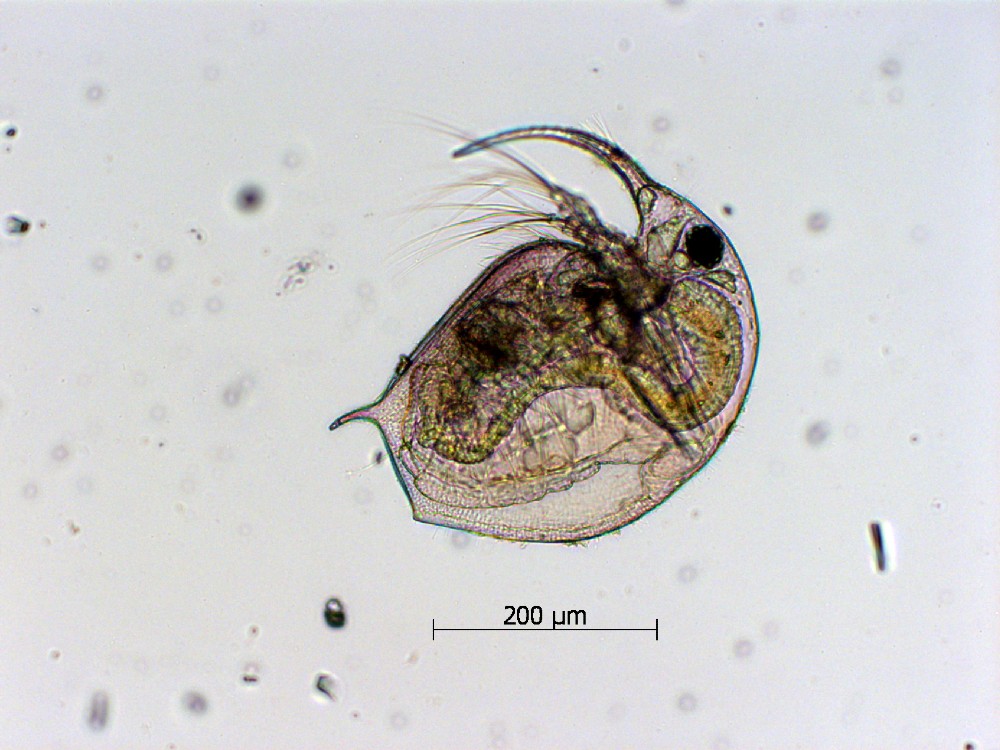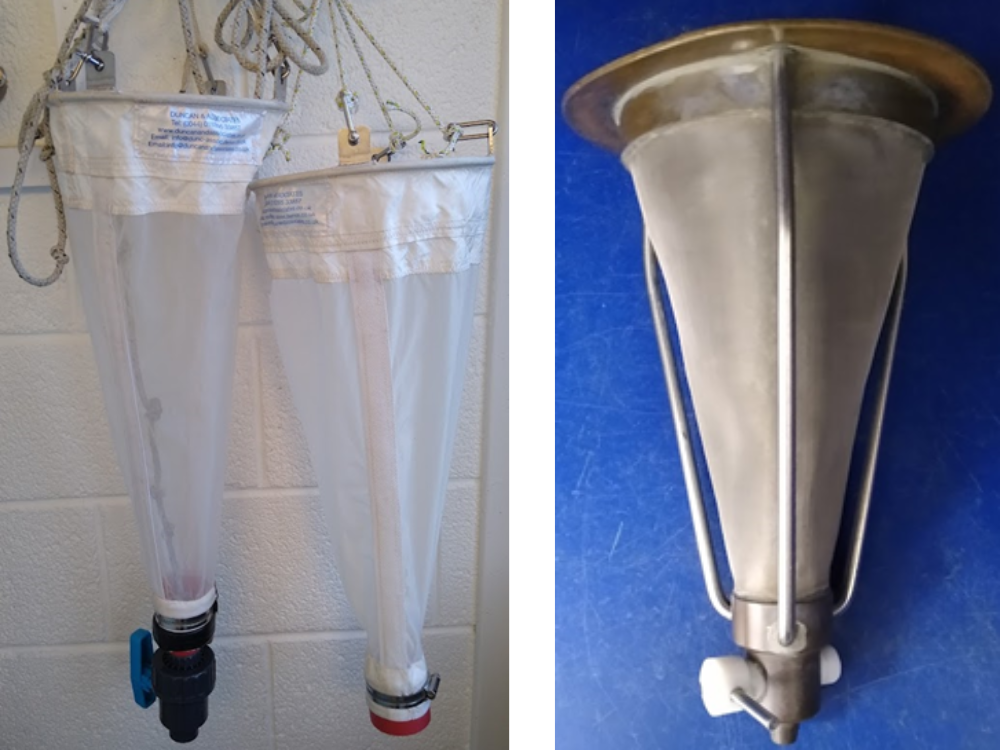Zooplankton
Zooplankton are very small animals that live in almost all open bodies of water, such as oceans, lakes (including Loch Leven), and ponds. They range in size from a few millimetres to just 20 microns (about the size of a single human skin cell).
Zooplankton play a very important role in keeping the water clean and provide a link between the phytoplankton and other species that live in the loch; they eat the phytoplankton at the bottom of the food web, and are preyed upon by other zooplankton, insect larvae, and fish.
Zooplankton are important for controlling algal growth, especially in early summer when their high grazing rates often create a period of very clear water. This is known as the clear water phase. As water temperatures rise, there is an increasing risk that invasive species, such as roach, will colonise the loch if accidentally introduced. Roach, which feed heavily on zooplankton, are likely to significantly reduce the numbers of grazing zooplankton that remove algae from the water. This could lead to even more phytoplankton blooms, and the potential loss of the clear water phase altogether.
Samples of zooplankton are collected by UKCEH from the Reed Bower and Sluices sampling sites at fortnightly intervals; they are good indicators of water quality because they are very sensitive to changes in environmental conditions.
Zooplankton samples are collected as follows: at Reed Bower a fine mesh net with a valve is thrown approximately 4 metres out of the boat (making sure to hold onto the rope at the other end!). The net is allowed to sink to give an angled net tow, then slowly pulled back in. Using the valve at the bottom to release the contents of the net into a separate cone filter, the sample is then refiltered, ensuring that the net is well rinsed with distilled water to remove any zooplankton stuck to the sides. The refiltered sample is then dispensed from the cone filter into a sample tub, making sure to again rinse the filter with distilled water to get all remaining sample into the pot. Finally, the sample is preserved so that the numbers of zooplankton can be counted later.
This graph shows Daphnia long-term average annual numbers at Reed Bower since 1975. The dataset includes all years where there were at least 17 separate sampling occasions. There is a large gap in the dataset between 1983 and 1991 because few Daphnia samples were collected over this period. Annual average numbers of Daphnia in 2020 appear unusually low, probably because no zooplankton samples were collected between mid-March and mid-June due to Covid restrictions. This is the period when Daphnia numbers are usually highest.
Download the Loch Leven crustacean zooplankton data for 2021.

